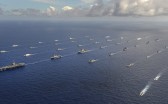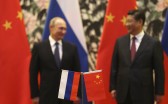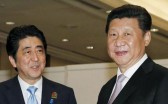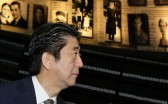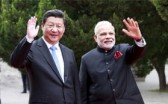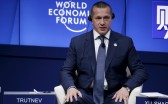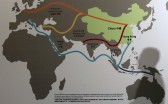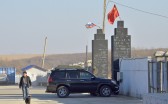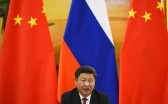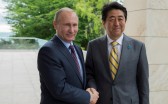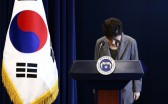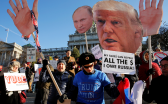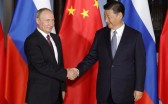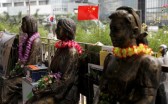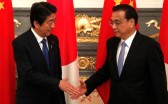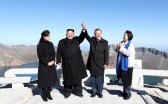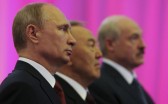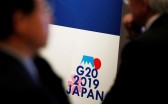Was President Putin’s visit on December 15-16 a success or a failure? Media coverage seems to have been almost unanimous in Japan and Russia. In Japan, a general sense of disappointment and many analytical articles concluded that the visit proved to be a failure for Prime Minister Abe. In Russia, conversely, a general sense prevailed that at least it was not a failure and possibly a victory for Putin. The reason why these opposite conclusions were drawn seems to be fairly simple. For those who had expected that resolution of the territorial problem could have been achieved at the Yamaguchi-Tokyo meetings—whether “two islands,” “two plus alpha,” or “four islands”—, the result was that expectations were dashed in Tokyo, while “fear” in Moscow was quelled. It is more than natural that Japanese felt disappointment and Russians felt relieved, leading even to a sense of victory.
One must question, however, whether these expectations or fears could be justified. There are at least three reasons to argue to the contrary. First, the heightened tempo of negotiations started only in May 2016 at the Abe-Putin Sochi meeting, after the breakdown of negotiations from February 2014 until the end of 2015. Only seven months have passed since then. Any serious decision on sovereignty with regard to territorial disputes is extremely difficult, and seven months are too short a period for any substantial outcome.
Second, there were very clearly many media-inflated reports in Japan starting from the end of September that raised expectations that something substantial would happen in December. But if you traced the quality of these reports, soon you would realize that most were self-perpetuated media speculation where credible sources were absent. The reality in many instances was that the media were betrayed by the expectations that they themselves had created.
Third, in the last month leading to the visit something strange seems to have derailed the tempo observable in the negotiations that had been taking place from May. We still do not know what really caused this unexpected downturn. A concrete sign of the downturn was Abe’s appearance in front of the media after his meeting with Putin in Lima, Peru on the fringes of the APEC meeting. The immediate Japanese media explanation was that it was due to a change of Russian policy, due either to the results of the US election, namely the friendly campaign message that Trump sent toward Russia, which diminished Abe’s value to Putin in driving a wedge between Japan and the United States, or to typical Russian behavior to move the goalposts when agreement seemed to be drawing closer.
Has the Japanese Bureaucracy Disobeyed Abe?
Recent disclosures to the media, however, began to spell out some astonishing information, that, it was some behavior of key Japanese officials in charge of the negotiations that antagonized the Russian side, and also that some Japanese media played a considerable role in worsening this rupture. Probably the most astonishing reported incident was that when Yachi Shotaro, director of the National Security Council, met his counterpart Nikolai Patrushev on November 9 in Moscow, and was asked if Habomai and Shikotan are returned to Japan is there a possibility to have a US base deployed there, he responded “yes.” This message was first reported by Asahi Shimbun on December 14, with a commentary from a Japanese government source that “it was an entirely justified answer because the US-Japan Security Treaty will apply there.” Asahi Shimbun revisited this in its concluding analysis of the visit on December 16, together with an additional observation that “Asahi’s report was immediately and widely reported in Russia.”
Just common sense tells us that if Shikotan and Habomai are returned to Japan and put under its administrative control, they would be under the coverage of article five of the security treaty, where the United States is obligated to defend them in case they are attacked by a third party. But where to allocate US bases inside Japan is an entirely different matter, as is where to allocate bases of the Self-Defense Forces, involving important strategic and domestic considerations. Japan has no strategic reason to authorize an SDF or US base on Shikotan, which has been beyond its administrative jurisdiction for more than 70 years. Moreover, there is, in my view, no US administration that would ask Japan to put a US base on territory that Japan had regained as the result of peaceful negotiations.
Yachi has been known throughout his career for his thoughtful approach to difficult foreign policy issues. As national security advisor, his interest in carefully balancing Japan-US security ties and improvement of Japan-Russia relations is more than natural. But the very “legalistic” tone of Asahi’s reporting just does not fit his thoughtful approach, which makes me suspect that some kind of misreporting or even disinformation had been circulated in November, resulting in hampering the progress of Japan-Russia talks. Unfortunately, there is other information circulated in Tokyo that during the seven months of negotiations several incidents arose when Japanese officials acted in defiance of Abe’s fundamental directions, and that they invariably became causes of dissatisfaction in Russia, leading to disconnects between the two administrations from the summit in Lima to that in Yamaguchi.
With What Messages Did Putin Arrive in Japan?
Whatever the real cause of this disconnect, Putin arrived in Yamaguchi after delivering public messages through 80 minutes of interviews with Nihon TV (NTV) and Yomiuri Shimbun. He mobilized all Russian “hard-ball” positions, that “there is no territorial problem for Russia, and it is Japan which is raising this issue”; “the 1956 Joint Declaration prescribes only Habomai and Shikotan, and the issue of Kunashiri and Etorofu is outside the scope of that agreement”; “there is an absolute need to strengthen trust, and the peace treaty comes after that, and to strengthen trust enhanced economic relations count”; “how can economic relations be enhanced when Japan is implementing sanctions?” Even so, it seems to me that the central message Putin delivered to Abe was “in visiting Abe’s hometown, I would very much desire that suddenly we could reach an understanding on how to resolve this problem (meaning the peace treaty issue).” Thus in totality, if Abe could convey a clear vision of how to resolve this issue in his confidential talks, and consequently, could show in public the pathway through which this issue could be resolved, the visit could be deemed a success. Was it a success in this regard?
What Agreements Were Reached?
First, improvement of graveyard visits by simplifying the existing procedures, from a humanitarian point of view, given the fact that the participants are already at an advanced age.
Second, starting consultations on the establishment of joint economic activities on the four islands, with a view that these consultations may become an important step toward the conclusion of a peace treaty; areas of cooperation might include, fisheries, marine culture, tourism, medicine, and the environment; an appropriate legal basis including an international agreement shall be considered; any agreement on joint economic activities shall not harm the respective government positions on a peace treaty.
These agreements were explained publicly by the two leaders. At the press conference on the afternoon of the 16th in Tokyo, Abe first emphasized his position that “the Japanese and Russians, not being stuck with the past, may co-exist and create win-win (mutually beneficial) relations. It is necessary to have a future-oriented vision to depict a future design for the four islands, and find a solution from there.”
With What Messages Did Putin Leave Japan?
Putin’s formal response to Abe’s opening remarks was not negative, but he expressed himself much more eloquently in responding to a journalist of Sankei Shimbun. He went into detail describing the history of territorial negotiations starting from “the 1855 Treaty, which finally handed over the Southern Kurile islands to Japan” and concluded that “Yesterday we talked with Prime Minister Abe, I read the very moving letters written by those who lived on the Southern Kuriles. In our view, we must end the historic ping-pong about these islands. Finally, we have to somehow understand that the fundamental interests of Japan and of Russia require a final and long-term solution. That is the point.” And then he continued: “Besides that, we came back to the negotiations based on the 1956 Joint Declaration, which conditioned, if you remember, the reversion of two islands to Japan, admittedly, not quite clearly, on which basis…There are a lot of nuances and problems, which we need to address to achieve the final goal, professionally and with mutual goodwill, especially to those who are somehow linked to these territories. What is the final goal? I have already said but I want to repeat again. If we realize Prime Minister Abe’s plans, these islands can become, not the fruit of conflict between Russia and Japan, but to the contrary, something that unites Russia and Japan…If someone considers that we are exclusively interested in establishing economic links, and that we are putting aside the peace treaty to the second plan, that is not the case. In my view, most important is the conclusion of a peace treaty, because this creates conditions for long-term mutual actions in historic perspective, with mid-term and long-term perspectives.”
There might be room for interpretation, but nowhere have I heard from Putin such a clear statement that: 1) somehow and somewhere a peace treaty shall be concluded; 2) at the center of those negotiations is the question of the transfer of Habomai and Shikotan: and 3) Abe’s approach to creating a system of joint economic activities first on four islands (before resolution of the sovereignty issue) may become the key contribution for concluding a peace treaty. Judging from all the agreements published and these statements, I consider that the visit found a way to narrow the divide between the positions of the two sides in the negotiations to continue from 2017. It was, therefore, a clear success.
One question needs to be answered before I draw further conclusions. Both “graveyard visits by former islanders” and “joint economic activities, or their variations” have already been discussed and tried so many times in the past negotiations. What is new in the new approach? The question is legitimate. As for former islanders’ visits to their ancestors’ graveyards, all the existing mechanisms had, in reality, a lot of barriers. Now, the new task is to genuinely dismantle the restrictions pertaining to their free visits. Can they really create such a genuinely free system and implement it? That is the question.
As for joint economic activities, the answer is partly theoretical and partly pragmatic. Theoretically, the fundamental legal position of the government of Japan on the territorial problem has always been that these islands are “unlawfully occupied” whereas the Russian position was that these islands are Russian territory “as the result of WWII.” The logical conclusion from this legal position was that the government of Japan dissuaded Japanese people from visiting the four islands. With a view to fine tune its position to reality, Japan has concluded several agreements with the Soviet or Russian governments to make exceptions to its legal position. That was the case for graveyard visits, no-visa visits, fishery agreements around the four islands, and so on. Therefore, if negotiations on sovereignty are successfully concluded, all these exception-agreements are to disappear immediately.
But now it is different. The newly established joint economic activities are there to contribute to the conclusion of a peace treaty. The fundamentals of the agreements shall stay after the conclusion of the peace treaty. Pragmatically, the difference is also substantial. Consultations and joint research on where and what to do jointly and how to begin these activities shall start far before the resolution of the issue of legal sovereignty. The practical implications should be enormous.
What are the Limitations and Risks Involved in the Negotiations from 2017?
The success of territorial negotiations leading to the conclusion of a peace treaty can be anticipated only if there emerges a well-coordinated team on each side to follow the common objectives as specified by the two leaders. The creation of joint economic activities and the give-and-take to find an answer on the sovereignty issue are, naturally, of enormous difficulty, where everyone from both sides should work with a common spirit. Given the success of the Yamaguchi-Tokyo meetings, incidents over the previous seven months related to the “disobedience of Japanese bureaucrats” must have been resolved, on the surface, at this point in time, but will they now form a harmonious team to follow Abe’s direction? If not, and if that direction is hampered by the lack of unity on the part of the Japanese bureaucracy, the consequences might become detrimental for bilateral negotiations.
Risks might occur also in an area I have not discussed in this article. The two sides have exchanged altogether 80 documents of cooperation, out of which 12 are documents at the government level and 68 at the private sector level. Two of the government documents are related to culture and foreign policy, but all the other 78 are related to economic and social issues. But expert analyses converge on the fact that few of them have reached the stage of actual contract making with assured financial underpinning. Private sector economic contracts are done on the basis of the private sector’s own calculations and profit-risk evaluations. What if only a small portion of this wide-ranging economic menu is commercially finalized to the disappointment of the Russian side? The lack of implementation, herewith, is a scary scenario that could spoil the relationship.
Last, but clearly not least, is the limitation or danger from Japan’s fundamental relations with the United States, China, and Russia. Putin has already raised in his public statements such critically important issues as “how would economic relations be developed to a new level while sanctions are on?” (in NTV-Yomiuri interview) or “We have for instance at Vladivostok…two large naval bases, our vessels require ocean zone exits to the Pacific Ocean, and we need to understand what is going to happen in this zone. How Japan-US relations would be constructed under their Security Treaty obligations, we do not know.” (Putin’s response to the Sankei reporter’s question at the press conference) Very clearly, issues raised are of critical importance for Japan. Abe and his government’s answer to adequately balancing relations of critical importance with three great powers needs to be faced squarely, as is being pointed out by Putin. While the two parallel, bilateral agenda items of a peace treaty and economic relations are destined to go through a difficult obstacle course in 2017. Abe’s geopolitical orientation of Japan’s foreign policy in this turbulent “me-first era” is no less challenging.
